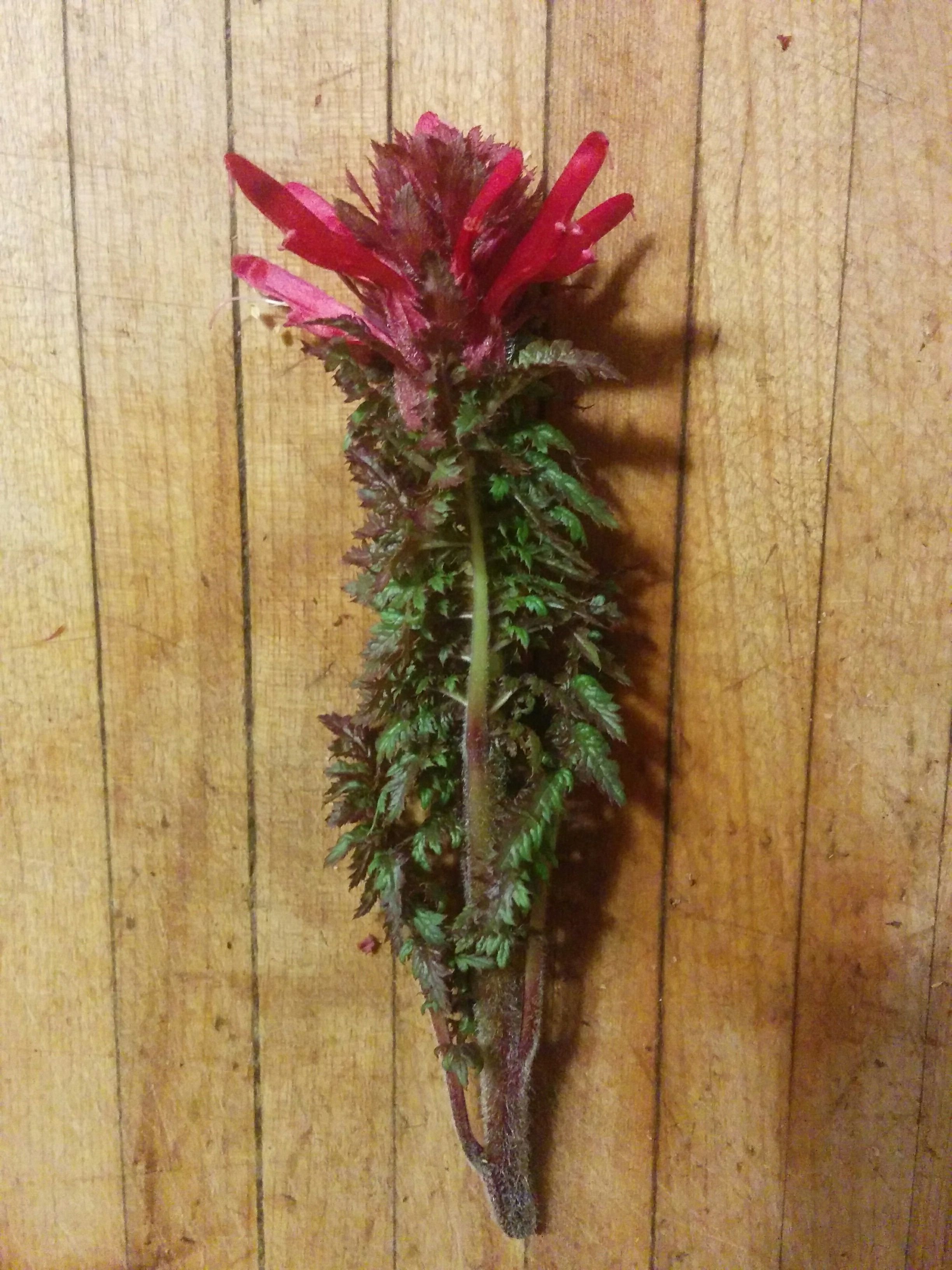There are these red flowers popping up all over the place here along roads and at the feet of trees.
They belong to the genus Pedicularis which includes hundreds of species widespread along northern United States and other temperate regions.
I recommend viewing an image search for Pedicularis and you might recognize one in your region... in any case they are all beautiful. Pedicularis have fern like leaves and flower stalks are spike like inflorescence.
In the case of this region in Southwest Oregon the species Pedicularis densiflora is common.

Pedicularis includes common names such as Elephant's Head (due to the flower shapes of some of the species), Betony (not to be confused with Stachys betonica which is also known as Betony), Lousewart and Indian Warrior.
Pedicularis is found in woodland and mountainous areas, usually at higher elevations. In this case Pedicularis densiflora can be found at lower elevations in Western North America.

The flowering stalk of Pedicularis is used for its sedating effects which can help relax muscles, including skeletal muscles and the cerebrum. In general it is recognized for helping reduce tension and anxiety. Somewhat akin to St. John's Wort, though I have heard it is even more effective in this area.
In the past Pedicularis has also been used for stomach ulcers, rheumatism and urinary problems.
The root apparently tastes like parsnips and can be eaten in moderation.

Pedicularis can be a tree root parasite but it is not necessarily a parasite. Pedicularis can attach itself to a host root after reseeding it's children may not find a nearby root to attach to and are not necessarily parasitic.
While Pedicularis is a perennial, they may be wiped out from forest fires. Pedicularis that have attached themselves to a host have a better chance of surviving fires.
Most interestingly, parasitic Pedicularis will also take on characteristics of their host, which can include either medicinal actions or toxins. So care should be taken when harvesting Pedicularis to understand the hosts which they are growing with.

I tasted some flowering stalks and within a short time did feel a light relaxing effect coming over me. It was fairly bitter, not quite as bitter as wormwood but getting close. Because of it's bitterness its not a medicine I would look forward to taking as a decoration or infusion, so while I am drying some flowers for infusions I am also going to experiment with Pedicularis as a tincture.


Please be careful not to over harvest any wild plants by choosing only a small amount of the population so that it has a chance to reproduce. In the chance of Pedicularis you can also only harvest "child" plants that are not attached to a host.
In any case you should read as much as you can about a wild plant before working with it including identification and warnings.
References:
Medicinal Plants of the Mountain West by Michael Moore
Edible and Medicinal Plants of the West by Gregory L. Tilford

Who is @sagescrub?
I am a ex-suburbanite turned permaculture homesteader. Follow my journey and I will share what I know and am learning along the way. You can learn more about me in my re-introducing @sagescrub post. Wishing you abundance in your life!
Know that I am likely NOT an expert on the subjects I present. Please do your own research and be your own expert!


